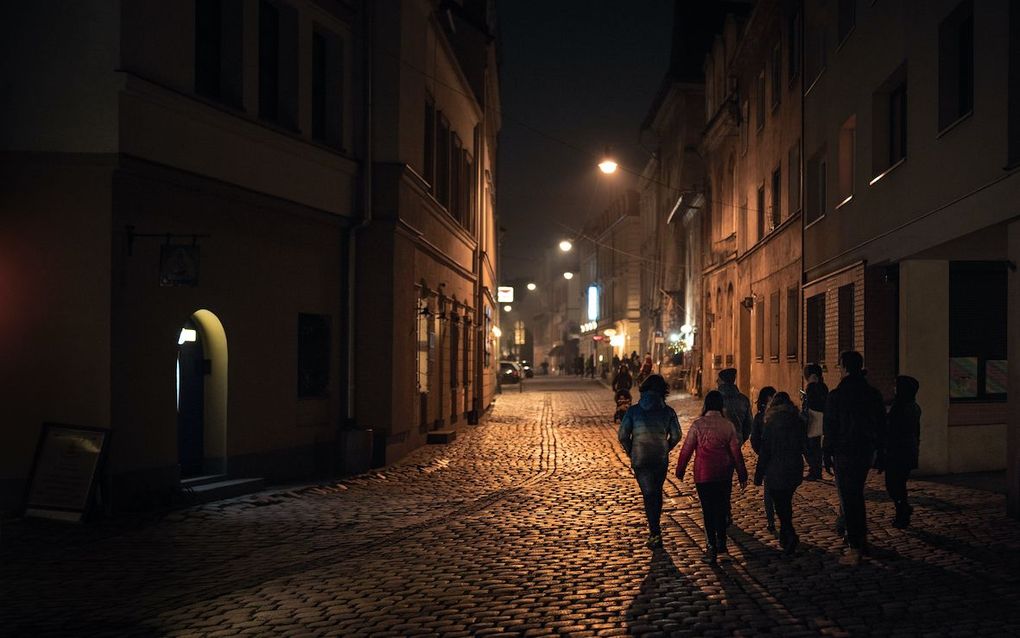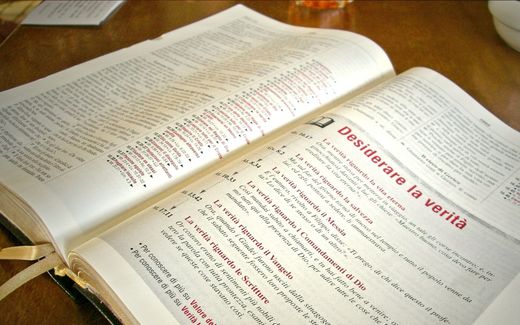Weekly column: Christian life in Poland: In this Catholic city you can see traces of Jewish milk and honey
18-10-2021
Christian Life
Sashko Nezamutdinov

Walking through Kazimierz, you feel the burden of history. Photo Flickr, Rafael Wagner
Christian Life
It was the first time this friend of mine visited me in Krakow. I told him, I would take him to Kazimierz, the Jewish quarter. It was on a Saturday. My friend asked me why bother going there if everything would be closed on the Jewish holy day. I was confused for a minute and then suddenly connected the dots saying: No, my friend! It is indeed called a “Jewish quarter” but not because Jews live there today. It is called so because of the history of that part of the city!
Today Kazimierz is just another district of Krakow. But back in the 14th century it was established as a town in accordance with Magdeburg rights (town privileges and laws that regulate the autonomy of the city). Jews could live there and so they were able to have a centre for their trade, business, religious and cultural life. They did not have to mingle with Christians (Catholics) living within the walls of neighbouring Krakow, but they were allowed to come into the Christian Krakow during the day to trade.
Sashko Nezamutdinov (1988) is a minister-in-training at Christ the Saviour Church in Krakow, Poland. He studies at the Evangelical Reformed Seminary of Ukraine (ERSU) in Kyiv. He likes reading about church history (especially Protestantism), the Austra-Hungarian Empire and the Slavic world. In the background, you might hear some jazz or bossa nova.
Centuries passed, and today Kazimierz is just another touristy part of already very touristy Krakow’s old town. However, no other city in Europe can compete with the density of Jewish synagogues in Krakow’s Kazimierz. Just in one square kilometre, you can find seven synagogues, even though not all of them are in use today.
Opened by Prince of Wales
Right in the heart of the Jewish quarter, me and my friend saw a four-story building where you can get Old Testament classes and see LGBT rainbow flags in its windows at the same time. Opened in 2008 by HRH Prince of Wales, this place serves as the centre of operations for the Jewish community in Krakow today.

The building becomes the headquarters for the Jewish Culture Festival every year in June. This festival is one of the largest festivals in the city. Every year it ends with a 97-kilometre fund-raiser called “Ride for the Living”, which is a cycling marathon that starts at Auschwitz-Birkenau’s gate and ends at the Jewish Community Centre located on Honey (Miodowa) Street. Me and my friend thought that no name could reflect better the ultimate Jewish destination: "a land flowing with milk and honey.”
In the Community Centre, you see constant exhibitions, workshops, lectures, and language classes. You can even find a Jewish kindergarten there and people are ready to help visitors with finding their Jewish roots. One may notice that the interior of the Center is very colourful. This is to help people feel better about their present instead of being focused just on their dark and gloomy past.
It was here that I met the local rabbi - a tall gentleman from New York, wearing a traditional kippah who has made Krakow his home. He told me that only around 5 per cent of what the Jewish community does in Krakow has to do with religion. Most of it is about Jewish culture and preserving the tradition.
Two sorts of Judaism represented
When it comes to faith, there are currently two strands of Judaism represented in Krakow. One is Orthodox Judaism, led by an American rabbi Avi Baumol. The other one is reformed (liberal and more progressive), led by the first female rabbi Tanya Segal since 2007. Currently, the two different approaches to Jewish faith coexist in the city and they do not seem to be causing any conflicts among the Jewish community. However, joint prayers are out of question primarily due to different understanding of women’s role in Jewish prayer.
The Jewish Museum “Galicia” offers a photography exhibition that tells about the life of Jews from the Polish part of Galicia. It is just one example of the many organisations that promote Jewish culture and history. In Schindler’s Factory you see what life in Krakow looked like during the Nazi occupation. The pharmacy “Under the Eagle” located in the heart of Krakow’s ghetto tells the story of conspiratorial meetings and of those who helped the people to survive in the ghetto.
You see Jewish traces everywhere. Including the mezuzahs - little indents in the doorposts serving as a witness to the times when they held little pieces of paper with Scripture in them and indicating that this was once a house where a Jewish family lived. Musicians play klezmer music on the street, usually outside of larger restaurants with kosher Jewish cuisine inviting all: Jews, non-Jews, and those who consider joining the Jewish faith tradition.

Walking through these narrow streets, you feel that the remains of Jewish writings on the walls bear witness to many lost souls that once became victims of the extermination regime. They remind us how much we do not want a history repeating.
Follow-up in Auschwitz
On that Saturday afternoon, my friend and I walked around the Jewish quarter. After a delicious matzah ball soup, I took him to the station where he jumped on an Auschwitz tour bus. I am sure that day he discovered something about the grim recent past of a people group that once was so numerous in the royal city of Krakow.



